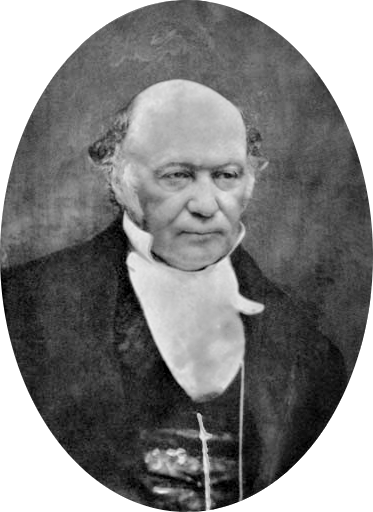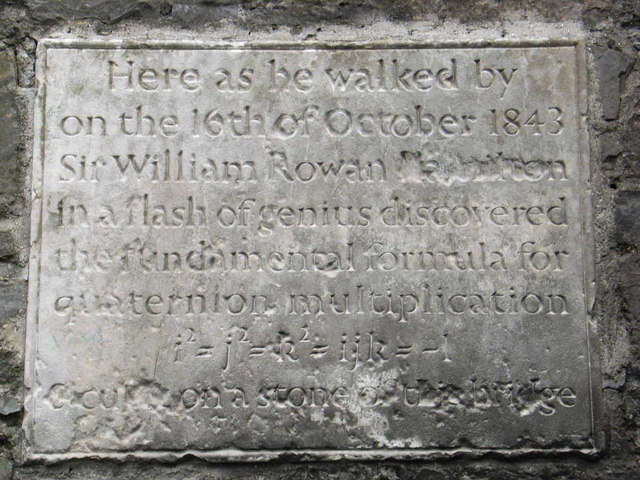Guest post by Vincent Kelly
We’re a bunch of dreamers uncomfortable with logic and the scientific method. Ireland overflows with poets, balladeers and songsters. It is brimming with left-side brainers with the gift of the gab. Considering Yeats, Joyce, O’Brien, Beckett and Shaw himself, who could argue with that point?
“You see things as they are and ask, ‘Why?’ I dream things as they never were and ask, ‘Why not?’” – George Bernard Shaw. This quote is often interpreted as a skewed description of where he saw the talents of the Irish race lying. It is supposed to refer to those qualities that saw the Irish make such a disproportionate contribution to English literature in the 19th and 20th centuries.
I think Shaw’s view is still widely held, and that it is a common belief that, notable as are Ireland’s contribution to music and literature, our contribution to science has been relatively meagre.
To support this, I’d bet most Irish people would be surprised to hear that one of the most brilliant mathematicians who ever lived was from Dublin. They may be even more amazed that one of his greatest achievements, dating from the 1840s, is now a key component of numerous applications. These are as diverse as 3-D animation (computer graphics, computer games), aeronautical engineering (black boxes, autopilot, computer aided flight, satellite navigation), quantum mechanics, robotics, molecular dynamics, neuropyschology (MRI scanning), astro-dynamics and bioinformatics. It is also being explored as a tool in the formulation of the “Standard Model” – the theory that aims to describe activity in the universe of the sub-atomic world.

This man was William Rowan Hamilton (left). He grew up in the early 1800s in the Parnell Street area of Dublin. His discovery was of “Quaternions” – vectors in three dimensional space. The maths involved is now a key component in the applications above.
The legend of Hamilton’s moment of inspiration is quite famous. On 16 October 1843, Hamilton was out walking with his wife along the Royal Canal in North Dublin. He was that most clichéd of genius. The otherworldly featherhead was so obsessed with his work that he often had to be reminded that he lived in the real world. So, in this ordinary moment, it was not out of character that Hamilton would have been mulling over a problem relating to his recent discovery. Out of nowhere inspiration struck and the solution presented itself to him. So fearful that he would forget it before he got home, Hamilton carved the formula for the fundamental property of these mysterious Quaternions into a wooden beam of Broom Bridge. It was a moment recalling the stories of Archimedes running naked through the streets of Syracuse shouting “Eureka!” or of an apple falling on the head of Isaac Newton.

What Hamilton had intuited was the quotient property of his quaternions; i2 + j2 +k2 = ijk = -1, or in geometric terms the rotation of a body through the 3D plane. What was remarkable about his achievement was his realization that aspects of his invented algebra were “non-commutative” i.e. the product of two quaternions differed depending on the order; a*b ≠ b*a. To make his breakthrough, Hamilton had to imagine what a world would look like without the 2,000 year old accepted principles of maths. In the history of civilisation, it was the first ever invention of a non-commutative algebra. It could not have been done without a dream of what never was, followed by the question ‘why not?’ In a spectacular fashion, Hamilton’s creativity and mental gymnastics disproves Shaw’s argument that the scientific method is uncreative (only the ‘why?’) and that the Irish cannot bring their talents to this sphere.
In a further delightful symmetry, Hamilton was also a poet himself. And better yet he further undermined Shaw’s opinion by being generally considered the worst poet Ireland ever produced. In fact, he was friends with William Wordsworth who, having read a volume of his poetry, charitably advised him not to write any more poems.
The maths of quaternions was briefly fashionable, before falling out of favour due to its clunky notation. It was eventually incorporated into linear analysis as it was extended into a model to incorporate any numbered dimensions. However, since the latter half of the 20th century, there has been a renaissance of interest in Hamilton’s work. While linear analysis has simpler notation and is more flexible in the abstract world, it was realized that quaternions were much more efficient at describing rotations in the 3D plane. This is the dimension, as it happens, of the human physical world, and hence a key component of multiple everyday processes.
Next Tuesday, it is the 169th anniversary of Hamilton’s epiphany under Broom Bridge. We should celebrate Hamilton, our finest scientist, and also Ireland’s rich legacy of scientific endeavour.
Vincent Kelly is a regular contributor to Science Calling. He works as an actuary in Dublin, and is interested in science and mathematics, particularly applied mathematics. He has a BSc in Financial and Actuarial Mathematics from DCU.
Maths Week Ireland runs from today until 21st October. One of the many events taking place is the annual Hamilton Walk. This starts next Tuedsay at the Dunsink Observatory and proceeds to Broom Bridge. For more informtion see about this event and others around the country see mathsweek.ie.

One thought on “Maths Week: Ireland’s lack of logic”
Comments are closed